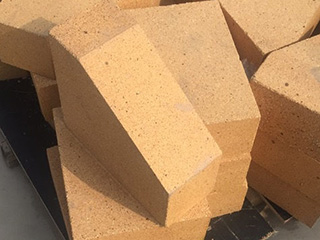Refractory materials play a crucial role in the glass production process, as they are used to line the furnaces and kilns where the glass is melted and molded. These materials are chosen for their ability to withstand extremely high temperatures, as well as their resistance to corrosion and erosion. In this article, we will explore the importance of refractory materials in glass production and the various types of refractory materials used in the industry.
The Process of Glass Production
Glass is made by melting a mixture of raw materials at high temperatures and then cooling it rapidly to form a solid material. The raw materials used in the production of glass include silica, soda ash, limestone, and other additives. These materials are mixed together and heated to a temperature of around 1600°C to 1700°C. This creates a molten liquid that can be shaped and formed into a variety of different glass products.
During the glass production process, the molten glass is poured into molds or pressed into shapes. These molds and shapes are made from refractory materials, which are able to withstand the high temperatures of the molten glass without melting or breaking down. The use of refractory materials ensures that the glass is molded correctly and that it is free from defects.

Types of Refractory Materials Used in Glass Production
There are several different types of refractory materials that are used in the glass production process. The most common types include:
1.Fireclay: Fireclay is a type of refractory material that is made from clay that has been heated to a high temperature. It is used to line the walls of furnaces and kilns because of its ability to withstand high temperatures and its resistance to corrosion.
2.Silica: Silica is a refractory material that is made from silica sand. It is used in glass production because of its ability to withstand high temperatures and its resistance to corrosion and erosion.
3.Mullite: Mullite is a type of refractory material that is made from alumina and silica. It is used in glass production because of its ability to withstand high temperatures and its resistance to corrosion and erosion.
4.Zirconia: Zirconia is a refractory material that is made from zirconium oxide. It is used in glass production because of its ability to withstand extremely high temperatures and its resistance to thermal shock.
5.Magnesia: Magnesia is a refractory material that is made from magnesium oxide. It is used in glass production because of its ability to withstand high temperatures and its resistance to corrosion and erosion.
Benefits of Refractory Materials in Glass Production
Refractory materials play a crucial role in glass production because they help to ensure that the glass is of high quality and free from defects. The use of refractory materials also helps to extend the life of the furnaces and kilns used in glass production, as they are able to withstand the extreme temperatures and harsh conditions that are present during the melting process. Additionally, the use of refractory materials helps to reduce the amount of energy required to melt the glass, as they are able to retain heat more efficiently than other materials.
Conclusion
In conclusion, refractory materials play a vital role in the glass production process. They are used to line the furnaces and kilns where the glass is melted and molded, and they help to ensure that the glass is of high quality and free from defects. The use of refractory materials also helps to extend the life of the furnaces and kilns, as well as reduce the amount of energy required to melt the glass. Overall, the selection of the right refractory materials is essential for the successful production of high-quality glass products.
Contact: Mgr. Han
Phone: 0086-13589497465
Email: 1255953279@qq.com
Add: Industrial Area of Lingzi Town,Zichuan District,Zibo City, Shandong,China